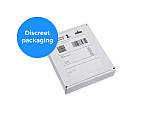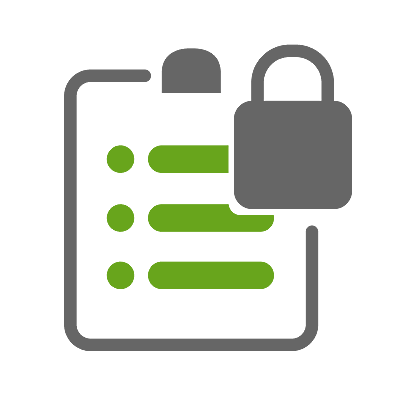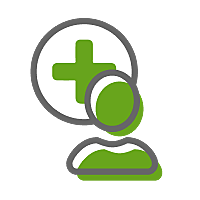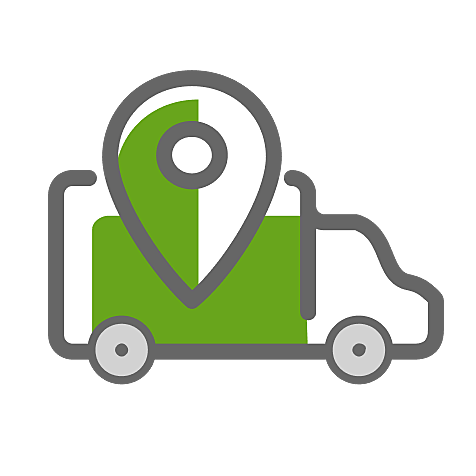Fexofenadine
Get help managing and preventing hay fever symptoms with fexofenadine hydrochloride 180 mg tablets.






Prices from £14.00
In stock. Simply fill in a brief questionnaire. One of our doctors will review your order and prescribe a suitable treatment. How to Order
-
Fexofenadine is a generic treatment that contains the active ingredient fexofenadine hydrochloride, a type of antihistamine. It relieves hay fever symptoms by blocking the effects of histamine (the chemical that causes allergy symptoms). Fexofenadine is available on prescription at 180 mg. You should take fexofenadine 180 mg tablets once a day during hay fever season.
Check your patient information leaflet for more information on fexofenadine.




About Fexofenadine
-
-
Fexofenadine is an unbranded medication that contains the active ingredient fexofenadine hydrochloride. It’s a non-drowsy antihistamine, so is less likely to cause drowsiness than some other antihistamines. Fexofenadine relieves allergy symptoms and can be used to treat hay fever.
-
-
Fexofenadine hydrochloride belongs to a group of medicines called antihistamines. It can block the effects of histamine, reducing the allergic reaction response and relieving hay fever symptoms.
If you’ve got hay fever, you have an allergy to pollen – a substance released into the air by plants for reproduction. The pollen count is highest during spring and summer in the UK and you can be allergic to different types. When you breathe in pollen, your body reacts by producing a chemical called histamine. This causes hay fever symptoms, such as itching, watery eyes, redness, a runny or blocked nose, sneezing, and skin rashes. These symptoms are your body's way of trying to get rid of the cause of your allergy.
-
-
Fexofenadine is available in 3 doses:
- fexofenadine hydrochloride 30 mg – for children aged 6 to 11
- fexofenadine hydrochloride 120 mg – over-the-counter
- fexofenadine hydrochloride 180 mg – prescription-only
You can get fexofenadine 120 mg tablets over the counter. If they aren’t strong enough to relieve your symptoms you may need a higher dose. You can get a prescription for fexofenadine 180 mg tablets and your treatment from ASDA Online Doctor.
-
-
Fexofenadine is suitable for adults and children over 6 years old, although we can only prescribe treatments for adults. You must have hay fever or another allergy that can be treated with fexofenadine and not be allergic to antihistamines. Check with your pharmacist or doctor if you’ve got any other conditions or take any other medications.
-
-
The usual dose is 1 Fexofenadine 180 mg tablet, once a day. Swallow fexofenadine whole, before a meal, with a glass of water. Don’t crush or split the tablet. The effects will start within 1 hour and should last for 24 hours (until your next dose). Fexofenadine for hay fever works best when taken continuously. Try to stick to the same time each day. You can take it at any time of day, so find what works best for you.
You can start taking fexofenadine around the time you’d usually get hay fever symptoms and continue until your symptoms usually stop (around mid-September). If you aren’t sure when to start and stop fexofenadine, speak to your doctor.
When should I start taking fexofenadine?
Start taking fexofenadine when you usually get hay fever symptoms, such as the start of spring.
What should I do if I forget to take fexofenadine?
If you forget to take fexofenadine, take your dose as soon as you remember. If it’s almost time for your next dose, skip the missed dose then carry on taking fexofenadine at your usual time. Don’t take a double dose to make up for a missed dose.
If you find it difficult to remember to take fexofenadine every day at the same time, set an alarm.
What should I do if I take 2 or more doses of fexofenadine?
Fexofenadine is generally safe so taking 2 doses is unlikely to cause harm. You may get some common side effects. If you take more than 2 doses, this will further increase your risk of side effects. If you’re worried that you’ve taken too much, speak to a doctor or contact 111.
What should I do if I want to stop taking fexofenadine?
You’d normally be advised to stop taking fexofenadine when you no longer need it, such as the end of hay fever season. Stopping fexofenadine can cause your hay fever symptoms to go back to how they were before taking it if you stop too soon.
-
-
Fexofenadine and pregnancy: Fexofenadine isn’t recommended as doctors aren’t sure about the effects it can cause to an unborn baby. You can take an over-the-counter antihistamine instead, but check with your doctor or pharmacist first.
Fexofenadine and breastfeeding: You may take fexofenadine if your doctor or midwife says your baby is healthy. Fexofenadine is unlikely to cause harm as only a tiny amount gets into breast milk, but an over-the-counter antihistamine may be more suitable. If you notice any changes in your baby while taking fexofenadine, contact your doctor or midwife straight away.
-
-
You should not take fexofenadine tablets if you’ve got an allergy to fexofenadine hydrochloride or any other non-active ingredients. Fexofenadine may also not be suitable if you:
- are elderly
- have liver or kidney problems
- have or have ever had heart disease
Although fexofenadine is a non-drowsy antihistamine, it may still make you feel sleepy or dizzy. Don’t operate heavy machinery or drive if these side effects are severe.
-
-
Fexofenadine, like all medications, can cause side effects in some people. You may notice side effects when you first start taking fexofenadine tablets or after you’ve taken them for a while. You can speak to your doctor if you’re worried about side effects.
A rare and serious side effect of fexofenadine is a serious allergic reaction (anaphylaxis). If you notice any of the following symptoms, call 999 or go to A&E straight away:
- swelling of the face
- redness or skin rashes
- difficulty breathing, wheezing, or coughing
- feeling weak or light-headed
Common fexofenadine side effects include:
- drowsiness
- dizziness
- headache
- feeling sick (nausea)
Uncommon fexofenadine side effects include:
- sleepiness
- tiredness
If you get any of these side effects, see if they go away on their own. You could also take fexofenadine at a different time of day to see if this helps. If these side effects are severe or affecting your daily life, speak to your doctor.
Other fexofenadine side effects (frequency not known) include:
- insomnia, bad dreams, or sleeping disorders
- blurred vision
- nervousness
- a fast or irregular heartbeat
- diarrhoea
- hives
- skin rash and itching
- a serious allergic reaction
Speak with your doctor if you get any of these side effects. If they’re severe, you can also call 111 or 999 in an emergency. For any other fexofenadine side effects not listed on the patient information leaflet, speak to your doctor and report them using the Yellow Card Scheme.
-
-
Check with your doctor before using fexofenadine for hay fever if you take:
- apalutamide (a medicine to treat prostate cancer), as fexofenadine tablets may not work as well
- indigestion remedies containing aluminium or magnesium, as these can lower the amount of fexofenadine absorbed – it’s recommended to leave 2 hours between taking fexofenadine tablets and indigestion remedies
For any other medicines, including herbal remedies and over-the-counter treatments, speak with your doctor before taking fexofenadine tablets for the first time.
-
-
You shouldn’t drink orange, grapefruit, or apple juice while taking fexofenadine. This can increase the risk of side effects. It’s best to avoid alcohol too, as this can make you feel more sleepy and drowsy. There’s no food that you need to avoid while taking fexofenadine.
-
-
The active ingredient in fexofenadine 180 mg tablets is fexofenadine hydrochloride. Check your patient information leaflet for any other non-active ingredients in the tablets.
-
-
How should I store fexofenadine?
Always keep fexofenadine out of sight and reach of children and vulnerable adults. Don’t use it after the expiration date. Fexofenadine doesn’t require any other special storage conditions.
How should fexofenadine be disposed of?
Don’t throw away unused fexofenadine in your normal household waste. Speak to a pharmacist about where to dispose of fexofenadine. The packaging may be recycled at your local pharmacy.
-
Frequently asked questions
What is fexofenadine used for?
Fexofenadine is used for common allergies, such as hay fever and pet allergies.
How long does fexofenadine stay in your system?
Fexofenadine 180 mg tablets have a half life of between 11 and 15 hours. This means half of the medication has left your system by this point. Fexofenadine only needs to be taken once daily as it’ll work until your next dose.
How much fexofenadine can I take?
You should only take 1 180 mg fexofenadine tablet per day. If this isn’t enough to relieve your hay fever symptoms after taking it for several weeks, speak to your doctor. You may need to try a different medication or be referred to an immunologist.
How long does fexofenadine take to work?
Fexofenadine should start to work within 1 hour. The best effect can be seen by taking the medication every day throughout hay fever season.
What can you not take with fexofenadine?
You can’t take indigestion remedies containing aluminium or magnesium within 2 hours of taking fexofenadine, as it could affect how well it works. You should also speak to your doctor if you take apalutamide or any other antihistamines.
Should I take fexofenadine at night or morning?
You can take fexofenadine at any time of day, although you should stick to the same time each day. Find a time that works for you.
Can I buy fexofenadine over the counter in the UK?
You can buy fexofenadine 120 mg tablets over the counter in the UK. A pharmacist may ask you some questions to make sure it’s a suitable treatment. The recommended dose is one tablet a day. If this isn’t enough to manage your hay fever symptoms, speak to a doctor about getting fexofenadine 180 mg tablets instead, or get a prescription and your treatment online from ASDA Online Doctor.
Why can't you drink orange juice with fexofenadine?
Orange, apple, and grapefruit juice shouldn’t be consumed with fexofenadine. They’ve been known to interact with the medication and increase the risk of side effects.

Babak studied medicine at King’s College London and graduated in 2003, having also gained a bachelor’s degree in Physiology during his time there. He completed his general practice (GP) training in East London, where he worked for a number of years as a partner at a large inner-city GP practice. He completed the Royal College of GPs membership exam in 2007.
Meet our doctorsLast reviewed: 27 Mar 2024
-
Fexofenadine, NHS [accessed 12 March 2024]
-
Fexofenadine hydrochloride, BNF [accessed 12 March 2024]
-
Fexofenadine 180mg film coated tablets, EMC [accessed 12 March 2024]
-
Hay fever, NHS [accessed 12 March 2024]
-
Hay Fever and Allergic Rhinitis, Allergy UK [accessed 12 March 2024]


GMC: 7074021

GMC: 6149061

GMC: 7085115







